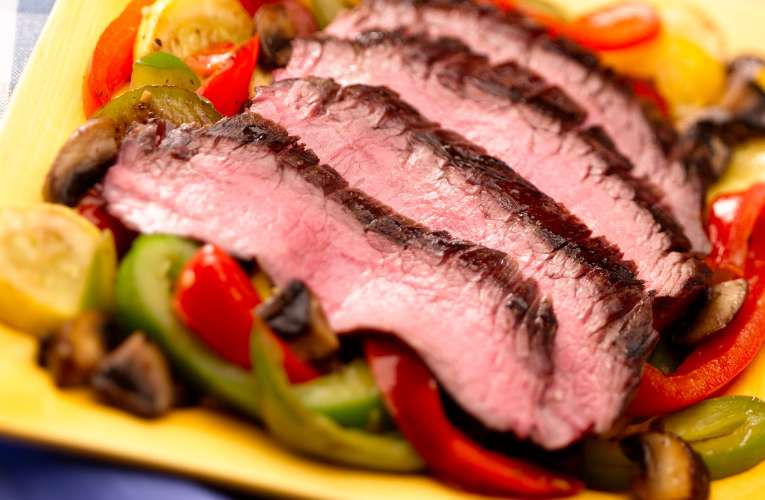Undercooking steak is not recommended as it can pose health risks. Cooking steak to the proper internal temperature ensures that any harmful bacteria are killed, making it safe for consumption.
Additionally, cooking steak to the right level of doneness enhances its flavor, juiciness, and tenderness. It is crucial to follow recommended cooking guidelines and use a meat thermometer to ensure your steak reaches the desired level of doneness while maintaining food safety standards.
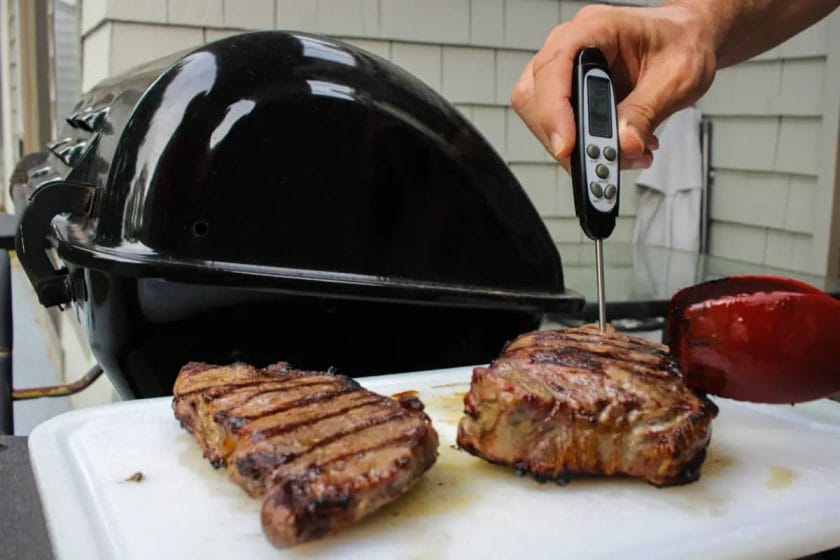
How to Achieve the Perfect Level of Doneness for Your Steak
When it comes to cooking a steak, achieving the perfect level of doneness is crucial. Whether you prefer a rare, medium, or well-done steak, cooking it to your desired level can make all the difference in taste and texture.
In this section, we will explore different methods and techniques to help you achieve the perfect level of doneness for your steak.
1. Understanding the Different Levels of Doneness
Before we dive into the cooking techniques, it’s important to have a basic understanding of the different levels of doneness for steak. Here are the most common levels:
- Rare: The center of the steak is dark red and cool to the touch. It is cooked for a short period of time, leaving the interior rare and juicy.
- Medium Rare: The center of the steak is pink and slightly warm. It is cooked slightly longer than rare, offering a slightly more cooked exterior while still maintaining a juicy center.
- Medium: The center of the steak is pink and warm. It is cooked for a bit longer, resulting in a more cooked exterior and a slightly less juicy center.
- Medium Well: The center of the steak is slightly pink and hot. It is cooked even longer, offering a well-cooked exterior with a hint of pink in the center.
- Well Done: The steak is fully cooked, with no pink in the center. It is cooked for an extended period, resulting in a well-cooked and often drier steak.
2. The Finger Test
A simple and foolproof method to determine the level of doneness is the finger test. Here’s how you can do it:
- Rare: Gently press the fleshy area of your palm below the thumb. It should feel soft and squishy, similar to how a rare steak feels.
- Medium Rare: Slightly press the tip of your index finger to the tip of your thumb. The fleshy area beneath your thumb should feel slightly firm, resembling a medium rare steak.
- Medium: Press the tip of your middle finger to the tip of your thumb. The firmness of the fleshy area under your thumb should mimic a medium steak.
- Medium Well: Press the tip of your ring finger to the tip of your thumb. The slight resistance is similar to how a medium well steak feels.
- Well Done: Press the tip of your pinky finger to the tip of your thumb. The firmness should resemble a well-done steak.
3. Cooking Techniques
Now that we have a good understanding of the different levels of doneness, let’s explore some cooking techniques to achieve them:
| Level of Doneness | Cooking Technique |
|---|---|
| Rare | Quickly sear the steak on high heat for a few minutes on each side. This will create a nice crust while keeping the center rare. |
| Medium Rare | Sear the steak on high heat for a few minutes on each side, then finish cooking it in the oven at a lower temperature until it reaches the desired level of pinkness. |
| Medium | Cook the steak on medium-high heat, flipping it occasionally until the center reaches the desired level of pinkness. |
| Medium Well | Cook the steak on medium heat for a longer period, ensuring the center is less pink and slightly more cooked. |
| Well Done | Cook the steak on low heat for an extended period, ensuring it is fully cooked with no pinkness left in the center. |
Remember to always use a meat thermometer to ensure the steak reaches the desired internal temperature. This will help you achieve the perfect level of doneness every time.
4. Resting the Steak
After cooking the steak to your preferred level of doneness, it’s crucial to let it rest for a few minutes before cutting into it. This allows the juices to
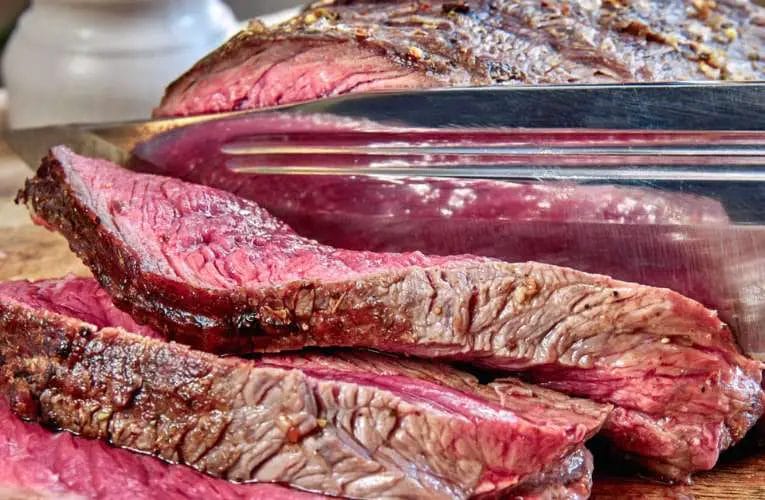
Common Mistakes to Avoid When Cooking Steak
Steak is a popular and delicious dish that many people enjoy. Whether you prefer it rare, medium, or well-done, cooking the perfect steak requires skill and attention to detail.
While it may seem simple, there are some common mistakes that can ruin your steak and leave you with a less than satisfactory meal. In this section, we will discuss some of these mistakes and how to avoid them.
1. Not Preheating the Pan or Grill
One of the most common mistakes when cooking steak is not preheating the pan or grill properly. It is important to preheat your cooking surface to ensure that it reaches the desired temperature before adding the steak.
This will help to sear the meat and lock in the juices, resulting in a flavorful and tender steak. Failure to preheat can lead to uneven cooking and a lack of caramelization on the surface of the steak.
2. Overcooking the Steak
Overcooking is a cardinal sin when it comes to steak. No one wants to bite into a tough and dry piece of meat. It is essential to cook the steak to the desired level of doneness, whether it is rare, medium, or well-done.
Using a meat thermometer can help you determine the internal temperature and avoid overcooking. Remember that the steak will continue to cook even after it is removed from the heat, so it is better to slightly undercook it and let it rest before serving.
3. Not Allowing the Steak to Rest
Resting the steak is a crucial step that many people overlook. After cooking, it is important to allow the steak to rest for a few minutes before slicing or serving.
This allows the juices to redistribute throughout the meat, resulting in a more tender and flavorful steak. Cutting into the steak too soon can cause the juices to escape, leaving you with a dry and less enjoyable eating experience.
4. Using the Wrong Cooking Method
Each cut of steak is different, and using the wrong cooking method can result in a less than perfect outcome. For example, a thick ribeye steak may benefit from a reverse sear method, while a thin flank steak may be better suited for quick and high-heat cooking.
It is important to consider the cut of steak and choose the appropriate cooking method to ensure optimal results.
5. Not Seasoning the Steak Adequately
A well-seasoned steak can make all the difference in flavor. Many people make the mistake of not seasoning their steak adequately, resulting in a bland taste.
It is essential to generously season the steak with salt, pepper, and any desired herbs or spices before cooking. The seasoning will enhance the natural flavors of the meat and create a delicious crust when seared.
6. Cutting into the Steak Too Early
Patience is key when cooking steak. Cutting into the steak too early can cause the juices to escape, resulting in a less juicy and flavorful piece of meat.
It is important to resist the temptation to slice into the steak immediately after cooking. Instead, allow it to rest for a few minutes to ensure that the juices are distributed evenly before cutting into it.
7. Not Using a Meat Thermometer
A meat thermometer is a valuable tool when cooking steak. It takes the guesswork out of determining the doneness of the meat, ensuring that it is cooked to your desired level.
Insert the thermometer into the thickest part of the steak, away from the bone, to get an accurate reading. This will help you avoid undercooking or overcooking the steak.
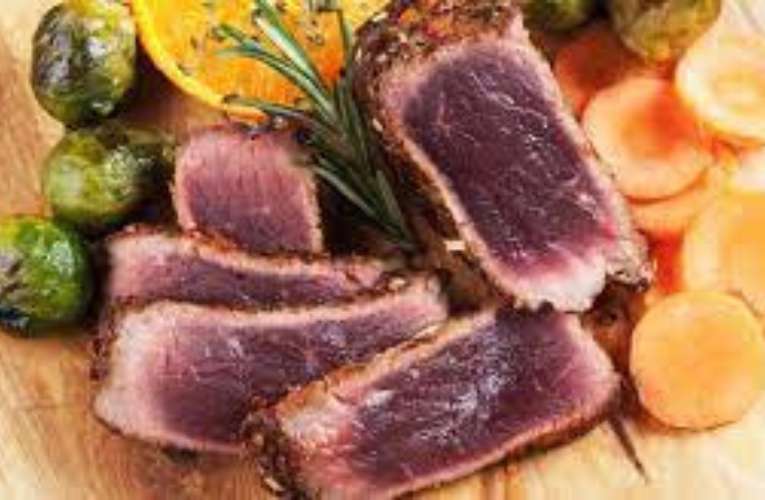
Tips for cooking steak to perfection every time
Steak is a classic dish that is loved by many. Whether you prefer a juicy ribeye, a tender filet mignon, or a flavorful strip steak, there are a few key tips to ensure that your steak is cooked to perfection every time.
In this section, we will explore these tips and techniques to help you achieve a mouthwatering steak that is tender, flavorful, and cooked to your desired level of doneness.
1. Choose the right cut of steak
The first step in cooking a delicious steak is selecting the right cut of meat. Different cuts have varying levels of tenderness, flavor, and marbling. Prime cuts like ribeye, tenderloin, and strip steak are known for their tenderness and rich flavor.
However, they can be more expensive. If you’re on a budget, cuts like sirloin and flank steak can still yield tasty results when cooked properly.
Grades of beef
Be aware of the grades of beef available. Prime grade is the highest quality and is usually found in high-end steakhouses. Choice grade is also a good option, offering a balance of tenderness and affordability. Select grade is leaner but may be less tender.
2. Prepare the steak before cooking
Properly preparing the steak before cooking can make a significant difference in its flavor and tenderness. Here are a few steps to follow:
- Remove the steak from the refrigerator and let it come to room temperature. This allows for more even cooking.
- Season the steak generously with salt and pepper or your preferred seasoning blend. Let it sit for about 30 minutes to allow the flavors to penetrate the meat.
- Pat the steak dry with a paper towel to remove any excess moisture. This helps form a nice crust when searing.
3. Get the temperature and timing right
Cooking steak to the perfect temperature requires precision. Here is a guide to help you achieve the desired level of doneness:
| Level of Doneness | Internal Temperature (Fahrenheit) |
|---|---|
| Rare | 125-130°F |
| Medium Rare | 135-140°F |
| Medium | 145-150°F |
| Medium Well | 155-160°F |
| Well Done | 160°F+ |
Use a meat thermometer to accurately gauge the internal temperature of the steak. Insert it into the thickest part of the meat without touching the bone.
4. Use the right cooking method
The cooking method you choose can greatly impact the final result of your steak. Here are a few popular methods:
- Grilling: Cooking steak over high heat on a grill adds a smoky flavor and beautiful grill marks. Make sure the grill is preheated before placing the steak on it.
- Searing and oven-finishing: Searing the steak in a hot skillet and then finishing it in the oven allows for a flavorful crust and even cooking.
- Sous vide: This method involves vacuum-sealing the steak and cooking it in a water bath at a precise temperature. It ensures consistent results and excellent texture.
5. Let the steak rest
After cooking, allow the steak to rest for a few minutes before slicing or serving. This allows the juices to redistribute, resulting in a more tender and flavorful steak.
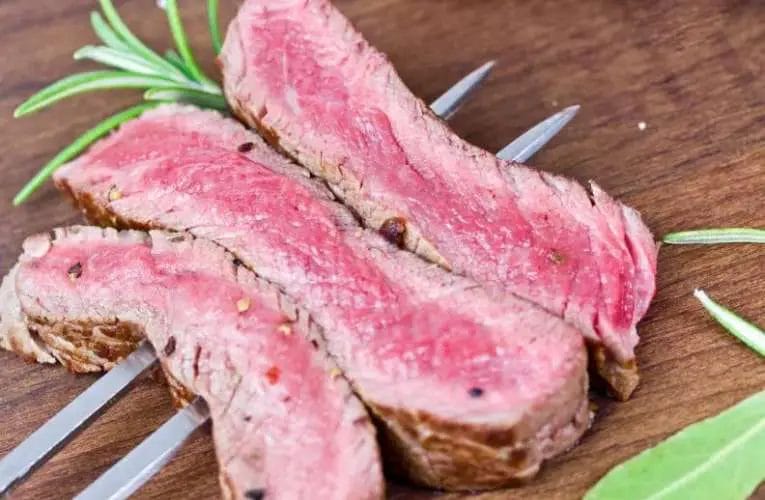
The importance of resting your steak after cooking
When it comes to cooking a perfect steak, there are several factors to consider. From choosing the right cut of meat to achieving the desired level of doneness, every step plays a crucial role in creating a delicious and tender piece of steak.
However, one often overlooked step in the cooking process is resting the steak after it is cooked.
Resting your steak involves allowing it to sit at room temperature for a few minutes before serving or slicing. This period of rest is essential for several reasons and can make a significant difference in the overall taste and texture of your steak.
1. Retaining Juiciness
When a steak is cooked, the heat causes the juices inside the meat to move towards the center. Resting the steak allows these juices to redistribute throughout the meat, resulting in a moist and juicy steak.
If you were to cut into the steak immediately after cooking, the juices would escape, leaving you with a dry and less flavorful piece of meat.
2. Enhancing Tenderness
Resting your steak helps to enhance its tenderness. When meat is cooked, the heat causes the proteins to contract, resulting in a tougher texture. Allowing the steak to rest allows the muscle fibers to relax and reabsorb some of the juices, making the meat more tender and easier to chew.
3. Allowing for Even Cooking
Resting your steak also helps to ensure that it is cooked evenly. During the cooking process, the outer layers of the steak are exposed to higher temperatures, while the center takes longer to reach the desired level of doneness.
By allowing the steak to rest, the heat from the outer layers is redistributed, resulting in a more uniformly cooked piece of meat.
4. Locking in Flavors
Resting your steak allows the flavors to develop and intensify. As the steak sits, the flavors have a chance to meld together, resulting in a more flavorful and enjoyable eating experience.
This is especially true for marinated or seasoned steaks, as the resting period allows the flavors to penetrate the meat more thoroughly.
5. Temperature Equilibrium
Another important reason to rest your steak is to achieve temperature equilibrium. When a steak is cooked, the outer layers are exposed to high heat, while the center remains cooler. Resting the steak allows the internal heat to distribute evenly, ensuring that each bite is cooked to perfection.
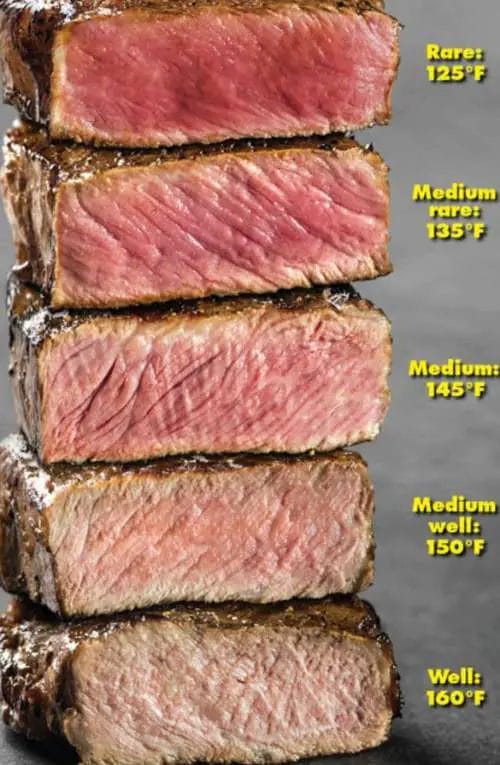
Exploring different cooking methods for steak
Steak is a versatile and delicious cut of meat that can be prepared in various ways to suit different tastes and preferences. In this section, we will explore different cooking methods for steak, highlighting the unique flavors and textures that each method brings.
1. Grilling
Grilling is one of the most popular methods for cooking steak, and for good reason. It imparts a smoky flavor and beautiful char marks on the meat. To grill a steak, preheat the grill to high heat and season the steak with salt, pepper, and any desired spices.
Place the steak on the grill and cook for a few minutes on each side, depending on the thickness and desired doneness. Remember to let the steak rest for a few minutes before slicing to allow the juices to redistribute.
2. Pan-searing
Pan-searing is a great option for those who don’t have access to a grill or simply prefer cooking indoors. To pan-sear a steak, heat a cast-iron skillet or a heavy-bottomed pan over high heat. Season the steak with salt, pepper, and any desired spices.
Add a high smoke point oil, such as canola or avocado oil, to the hot pan and carefully place the steak in the pan. Cook for a few minutes on each side to achieve a flavorful crust. Finish the steak in the oven at a high temperature to reach the desired level of doneness. Let the steak rest before slicing.
3. Sous vide
Sous vide is a cooking technique that involves vacuum-sealing the steak and cooking it in a water bath at a precise temperature for an extended period. This method ensures a perfectly cooked steak with consistent results. To cook steak sous vide, season the steak and vacuum-seal it in a bag.
Place the bag in a preheated water bath and cook according to the desired doneness and thickness. After the cooking time, remove the steak from the bag and sear it in a hot pan or on the grill for a few seconds on each side to develop a caramelized crust.
4. Broiling
Broiling is a quick and easy method for cooking steak that results in a deliciously charred exterior and a juicy interior. To broil a steak, preheat the broiler and adjust the rack to the desired distance from the heat source. Season the steak with salt, pepper, and any desired spices.
Place the steak on a broiler pan or a wire rack set on a baking sheet. Broil the steak for a few minutes on each side, flipping halfway through, until it reaches the desired level of doneness. Let the steak rest before slicing.
5. Smoking
Smoking is a slow and indirect cooking method that infuses the steak with a rich and smoky flavor. To smoke a steak, prepare a charcoal or wood-fired smoker and bring it to the desired temperature. Season the steak with salt, pepper, and any desired spices.
Place the steak in the smoker and cook until it reaches the desired internal temperature. The cooking time will depend on the thickness of the steak and the smoker temperature. Once cooked, let the steak rest before serving.
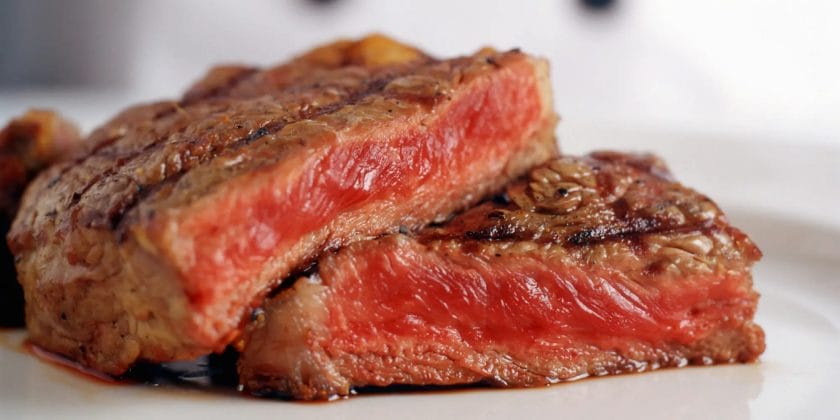
FAQs
Can you undercook steak?
Undercooking steak is not recommended. Consuming undercooked or raw meat can increase the risk of foodborne illnesses, such as salmonella or E. coli. It is important to cook beef to a safe internal temperature of at least 145°F (63°C) for medium-rare and higher for well-done.
Conclusion
In conclusion, while undercooking steak might be tempting for some, it is not recommended due to potential health risks. Properly cooking steak ensures that any harmful bacteria, such as E. coli, is killed off, minimizing the risk of foodborne illnesses.
Additionally, undercooked steak may not be as flavorful or tender as properly cooked steak. It is crucial to follow cooking guidelines and use a food thermometer to ensure the steak reaches the proper internal temperature.
Cooking steak to at least medium-rare not only ensures safety but also enhances the taste and texture for a more enjoyable dining experience. Remember, it’s always better to be safe and savor the deliciousness of a perfectly cooked steak.

